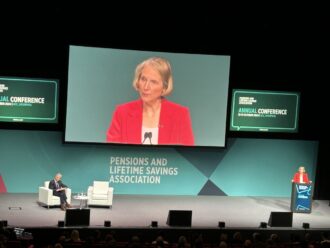China and Japan were the place to be in 2020 if you were investing in private equity, while the risk adverse were better off in India, discovers Andrew Holt.
Boris Johnson’s rallying cry for pension schemes to create an investment “big bang” by backing UK assets put infrastructure and private equity under the spotlight. Yet a look at the returns available might lead to his call to back more private companies falling on deaf ears.
Although the asset class has been the highest-returning private market asset class since 2006, according to McKinsey, the UK failed to make into the top 10 destinations for private equity returns last year. Eastern Asia and northern Europe were the places to be for those wanting private equity exposure as they produced market leading annual returns of 31.5% and 26.8%, respectively, according to eFront.
UK private equity returned on average 15%, gross of fees, which puts it on par with India. However, those investing in UK private businesses took more risk to achieve this return at 69%, which is significantly higher than the risk of investing in India at 49%.
The performance of northern Europe could be due to its being overweight to tech companies when compared to the global average.
However, there is a note of caution for those looking at the Asia-Pacific region. Private equity funds took more risk, when measured by the standard deviation of individual returns (99%).
North America was not far behind northern Europe with an average return of 21.8%, equaling the global average, but at a higher risk. Its standard deviation of annual returns stood at 84%, compared with the global figure of 80%.
Western Europe earned investors an average return of 18.5%, but its low standard deviation (63%) keeps it close to the global average return per unit of risk.
A national view
Adopting a more granular approach and analyzing the individual national markets offers more clarity: the top performers in 2020 were China (34.4%) and Japan (38.3%).
Sweden (32.2%) and Finland (28.9%) also hold the center stage, positioned above the trendline due to high returns and low levels of the standard deviation of individual returns.
Similar to the regional view, the relationship between the annual return and the standard deviation at individual national private equity markets is relatively strong.
During 2020, Finland and Germany recorded the most favorable annual return per unit of risk measured as standard deviation.
German deals have low variation in returns (50%) while generating 23.3% of annual returns on average, while Chinese deals record the highest level of volatility (106%), followed by the Japanese ones (98%).
The US market is positioned below the analytical trendline: its performance (21.7%) is almost identical to the global average (21.8%), but American deals record a high variation in deal performance (85%).
French and Australian markets, meanwhile, have similar risk-return profiles, generating an annual return of just above 20%.
IRR performance
Looking at annualized internal rate of return (IRR) as a measure of performance, the regions are split into two groups.
The first group consists of the regions that have an average annualized gross-of-fees IRR above the level of 20%: southeast Asia (21.44%), northern Europe (21.48%), eastern Asia (22.30%) and Oceania (20%).
The second group of regions yields annual IRRs that range from 14% to 18%. North America (14.16%) fell short of matching global trends, mainly because of Canada’s 7.5% IRR.
Europe has 18% IRR and narrow quartile spread, resulting in an attractive risk-return profile. Western Europe is a more mature and established market, and thus records lower dispersions of risks and return.
Global private equity – 2020 relative return by country
1. Japan – 38.3%
2. China – 34.4%
3. Finland – 32.2%
4. Sweden – 28.9%
5. Canada – 26.1%
6. Germany – 23.3%
7. US – 21.6%
8. Australia – 20.8%
9. France – 20.4%
10. Netherlands – 18.7%
Source: eFront Insight




